The coils and curves of textured hair carry more than mere strands; they hold generational wisdom , a living archive of human adaptation, artistry, and spirit. To understand how ancient communities cared for their hair’s texture is to trace the very lineage of self-expression, community connection, and ancestral reverence—a journey that Roothea calls the ‘Soul of a Strand’. This exploration, deeply rooted in the heritage of Black and mixed-race hair, reveals how the care of hair was, and remains, an intimate dialogue between biology, culture, and individual identity.

Roots
In the vast expanse of human history, long before the chemists formulated synthetic blends or the stylists wielded heated tools, our ancestors understood hair with an inherent wisdom. They recognized its vulnerabilities and its strengths, especially the unique characteristics of textured hair. This understanding was not gleaned from laboratories, but from seasons of observation, from the very rhythm of life, and from a deep connection to the Earth’s offerings.
To consider how ancient communities managed their hair’s texture, one must first grasp the biological blueprint, recognizing that the coiled nature of many hair types served not as a challenge, but as an elegant evolutionary response. The very structure of a strand, its elliptical cross-section, which dictates its curl, provided a natural defense against the equatorial sun, offering insulation and protection to the scalp.

Hair Anatomy and the Ancestral Strand
The fundamental architecture of hair, though seemingly simple, belies a complex interplay of protein structures. Each hair grows from a follicle, a tiny organ nestled within the skin. For textured hair, this follicle often possesses an elliptical or flattened shape, causing the keratin filaments within the hair shaft to coil as they grow. This unique geometry is the anatomical bedrock of curls, kinks, and waves.
Straight hair, by contrast, typically originates from a round follicle. This biological distinction is paramount in understanding historical care practices; textured hair, with its numerous twists and turns, naturally presents a greater challenge for the distribution of natural scalp oils, making it more prone to dryness.
Ancient communities, whether through empirical observation or inherited knowledge, perceived these differences. They learned that tighter coils demanded a greater infusion of moisture and gentle handling. Their approach to care was therefore intrinsically linked to this foundational biology, long before microscopes revealed the secrets of the cortex. It was a lived science, passed down through the generations, adapting to climate, available resources, and communal practices.
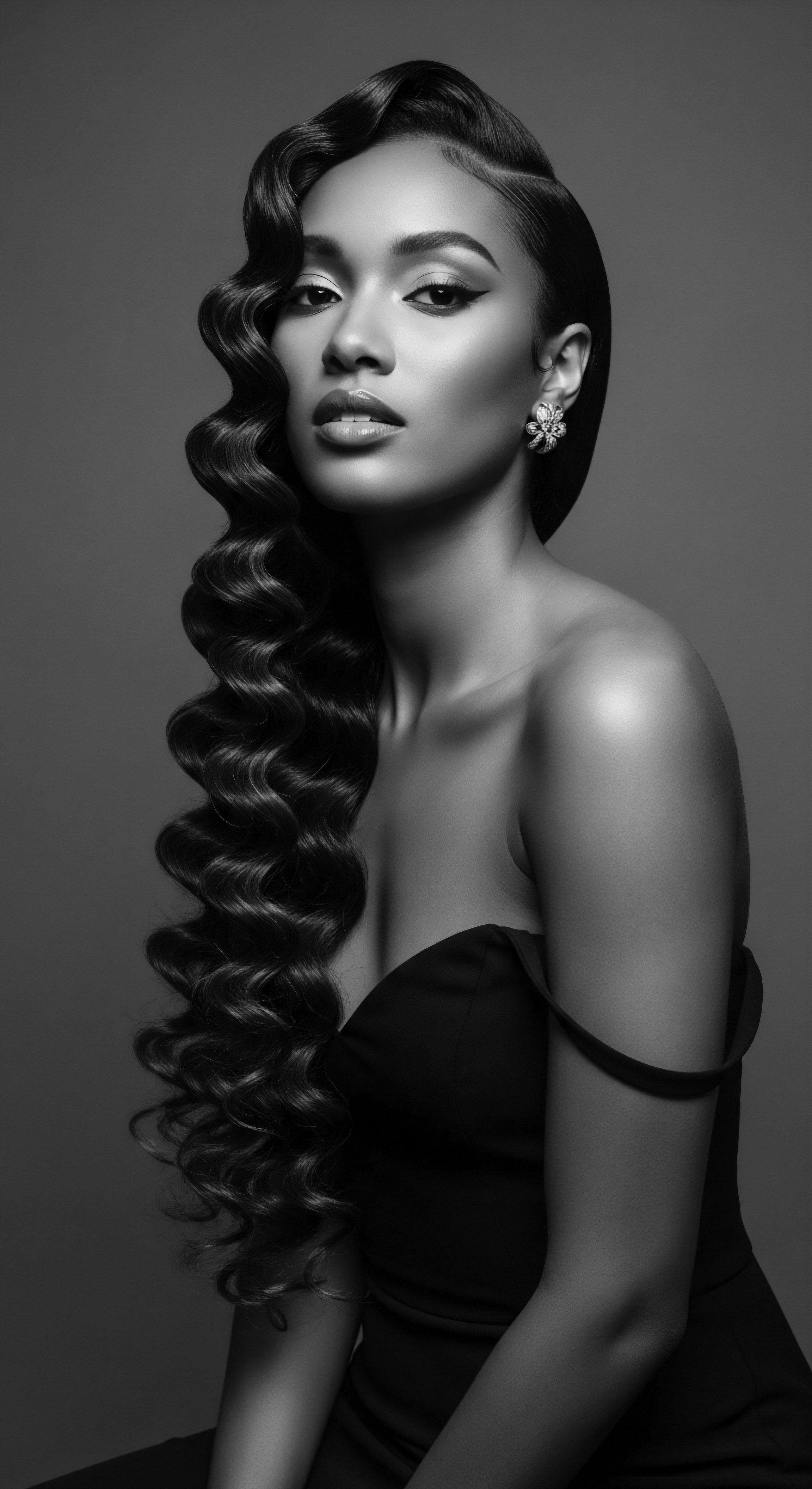
What Determined Ancient Hair Classifications?
Modern hair classification systems, such as the widely recognized Andre Walker typing system, categorize hair by its curl pattern from straight to tightly coiled. While these contemporary frameworks did not exist in antiquity, ancient societies developed their own nuanced ways of distinguishing and valuing hair types. These were often tied to social status, ethnic identity, and aesthetic ideals. For instance, Egyptian art frequently depicted people with varying degrees of texture, from wavy to tightly curled, and wigs were designed to emulate different hair forms.
The Nubian wig, for instance, gained particular fascination in the Amarna period, aiming to replicate the distinctive short and curly hair of Nubian tribespeople, with some Egyptologists believing Queen Nefertiti herself adopted this style. This suggests a recognition of specific hair textures and a desire to embody or imitate them through styling.
The value placed on certain hair types was also deeply entwined with spiritual beliefs and cultural narratives. In many African civilizations, hair was a powerful symbol, communicating family history, social class, spiritual connection, tribal affiliation, and marital status. The mere observation of a hairstyle could convey a wealth of information about an individual’s place within their community. This informal yet potent system of “classification” went far beyond mere aesthetics; it was a deeply embedded component of social cohesion and personal expression.
The physical contours of textured hair, far from a mere aesthetic, represent an ancient biological adaptation and a rich canvas for cultural identity.
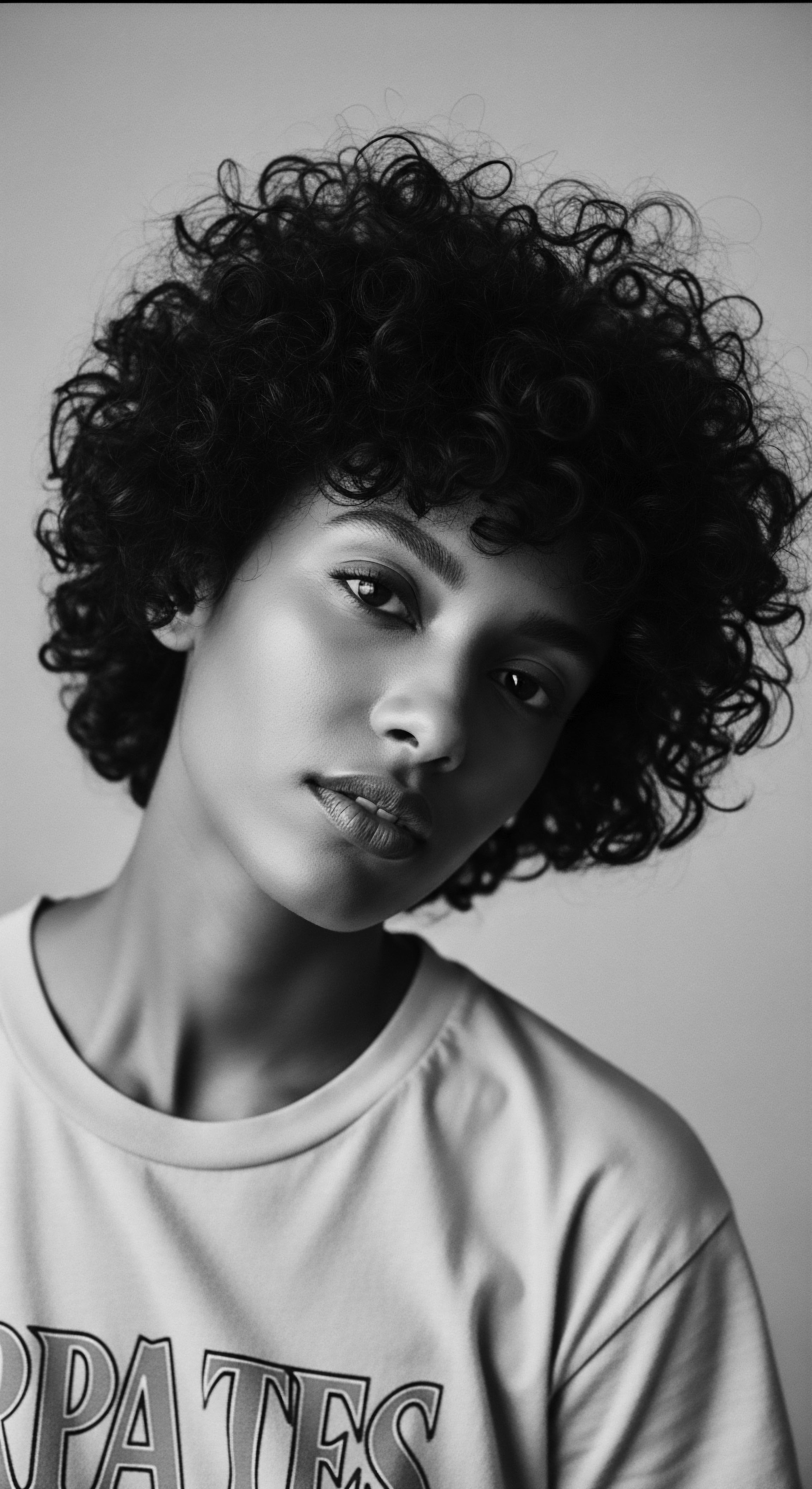
The Foundational Lexicon of Textured Hair
Long before academic papers formalized the terminology, ancient communities possessed their own vocabularies to describe and discuss hair. These words were often rooted in lived experience, reflecting the tactile qualities of the hair, the tools used for its care, and the styles it adorned. For instance, the very act of ‘coiling’ or ‘braiding’ was articulated through terms specific to local languages and traditions. While precise linguistic records are scarce for many ancient practices, we can surmise that descriptive terms for hair were deeply interwoven with daily life and communal rituals.
The specific names given to particular braiding patterns, the designations for various plant-based oils, or the epithets for different hair adornments formed a vibrant, living lexicon. This oral tradition, passed from elder to youth, formed the initial “textbook” of textured hair care, its definitions shaped by centuries of communal practice and observation.
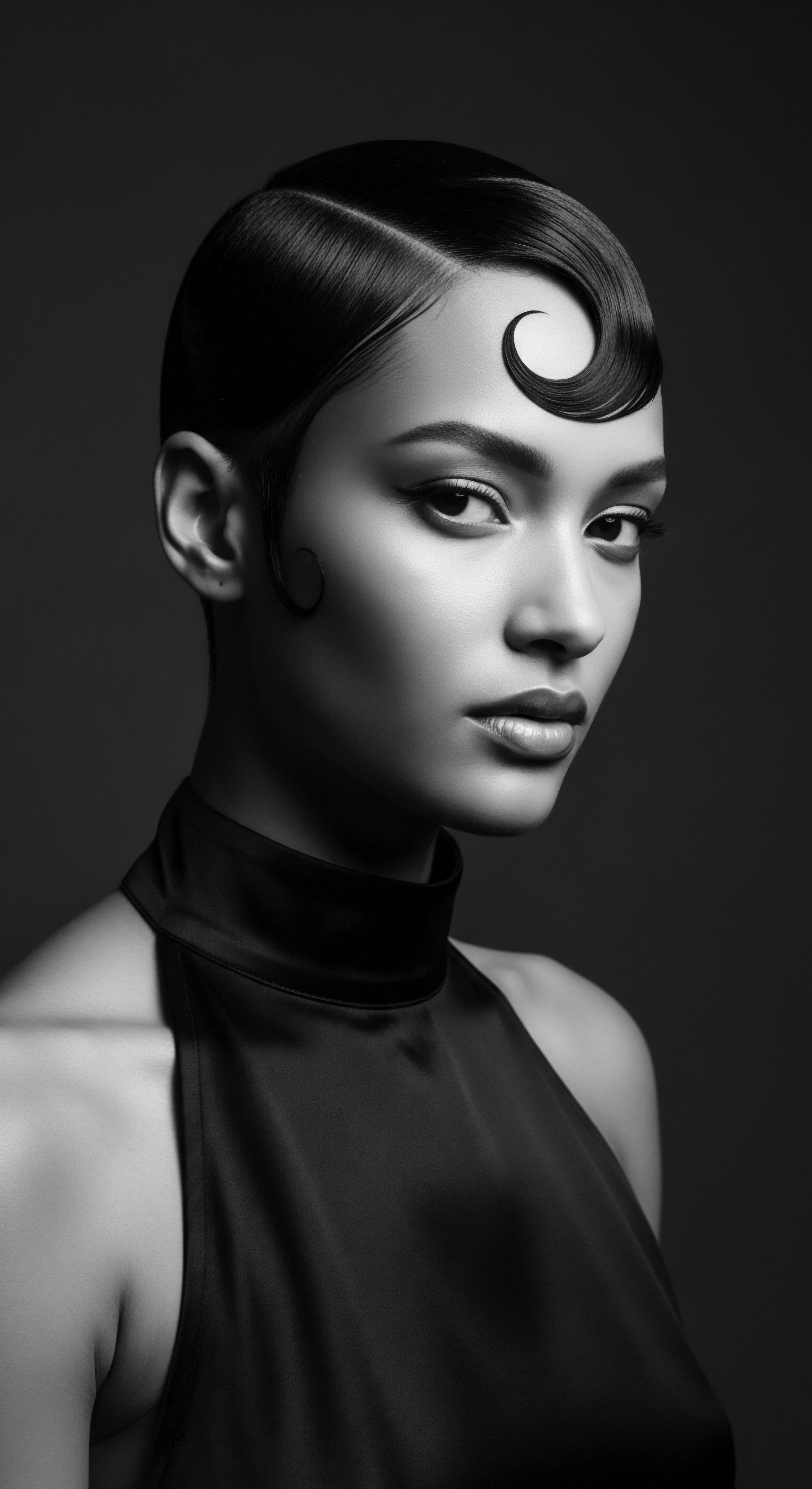
Hair Growth Cycles and Early Environmental Influences
Hair grows in cycles ❉ anagen (growth), catagen (transition), and telogen (rest). Ancient communities, without the benefit of modern scientific understanding, observed these cycles indirectly through hair shedding and regrowth. Their practices were likely shaped by these observations. Seasonal changes, dietary variations, and environmental factors such as humidity or arid conditions undoubtedly impacted hair health and growth, prompting adaptive care routines.
Consider the dry, often harsh climates of regions like ancient Egypt or the semi-arid zones of parts of Africa. Here, the challenge of moisture retention for textured hair would have been particularly acute. Communities learned to counteract dryness through the consistent application of natural emollients. They cultivated plants and harvested animal fats that provided essential lipids, effectively mitigating the environmental stressors that hair faced. This nuanced understanding of external factors impacting hair health, gained through generations of practical experience, formed a crucial element of their ancestral wisdom.
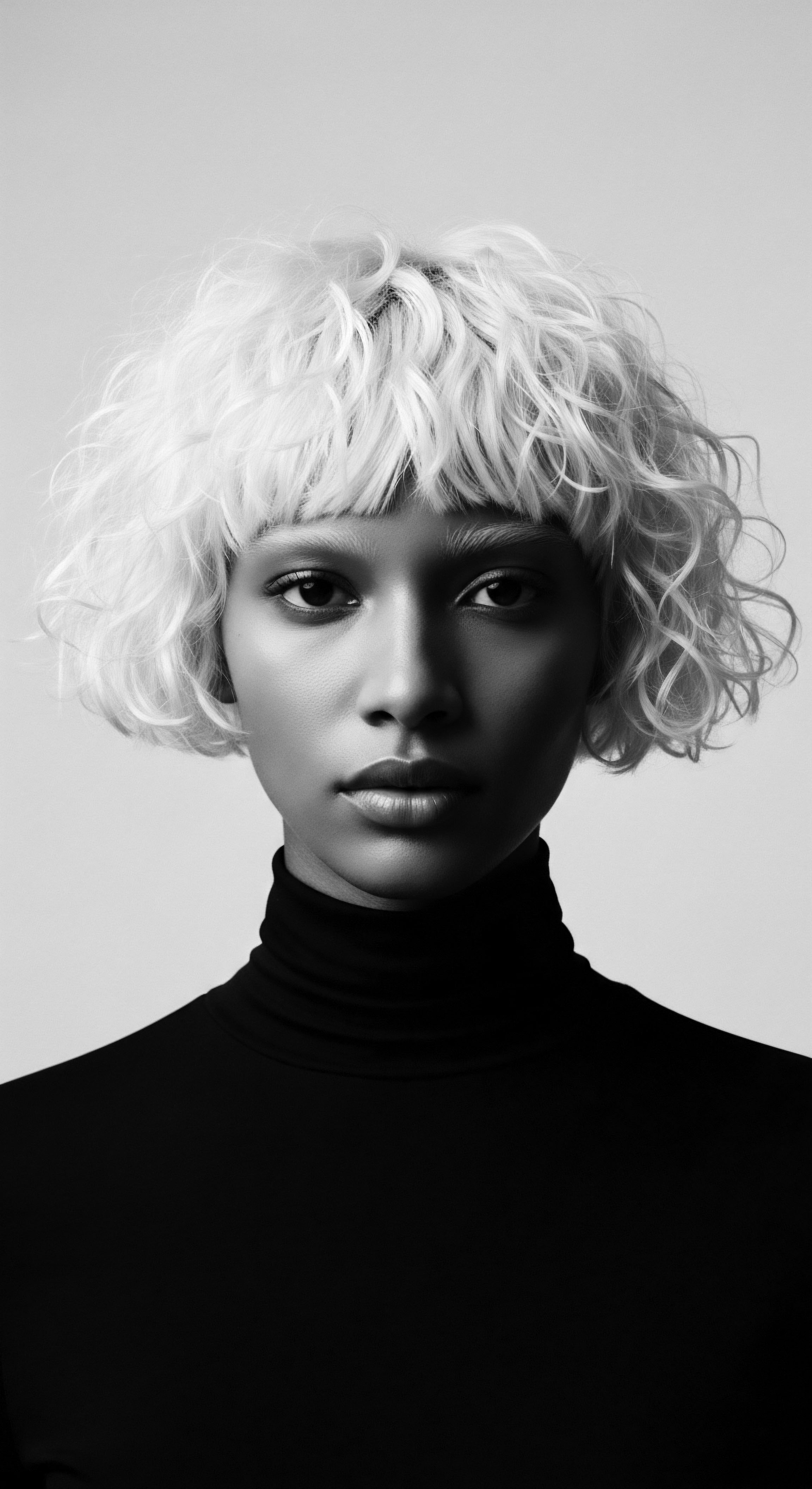
Ritual
From the delicate shaping of coils to the intricate interweaving of strands, the care of textured hair in ancient communities ascended beyond mere grooming; it became a deeply ingrained ritual, an expression of art and shared social connection. These practices, honed over millennia, were not simply about appearance. They were moments of solace, conduits of wisdom, and declarations of identity, all infused with the unique properties of textured hair. This historical tapestry of styling techniques, tools, and transformations offers profound lessons for our contemporary understanding of hair and its powerful heritage .
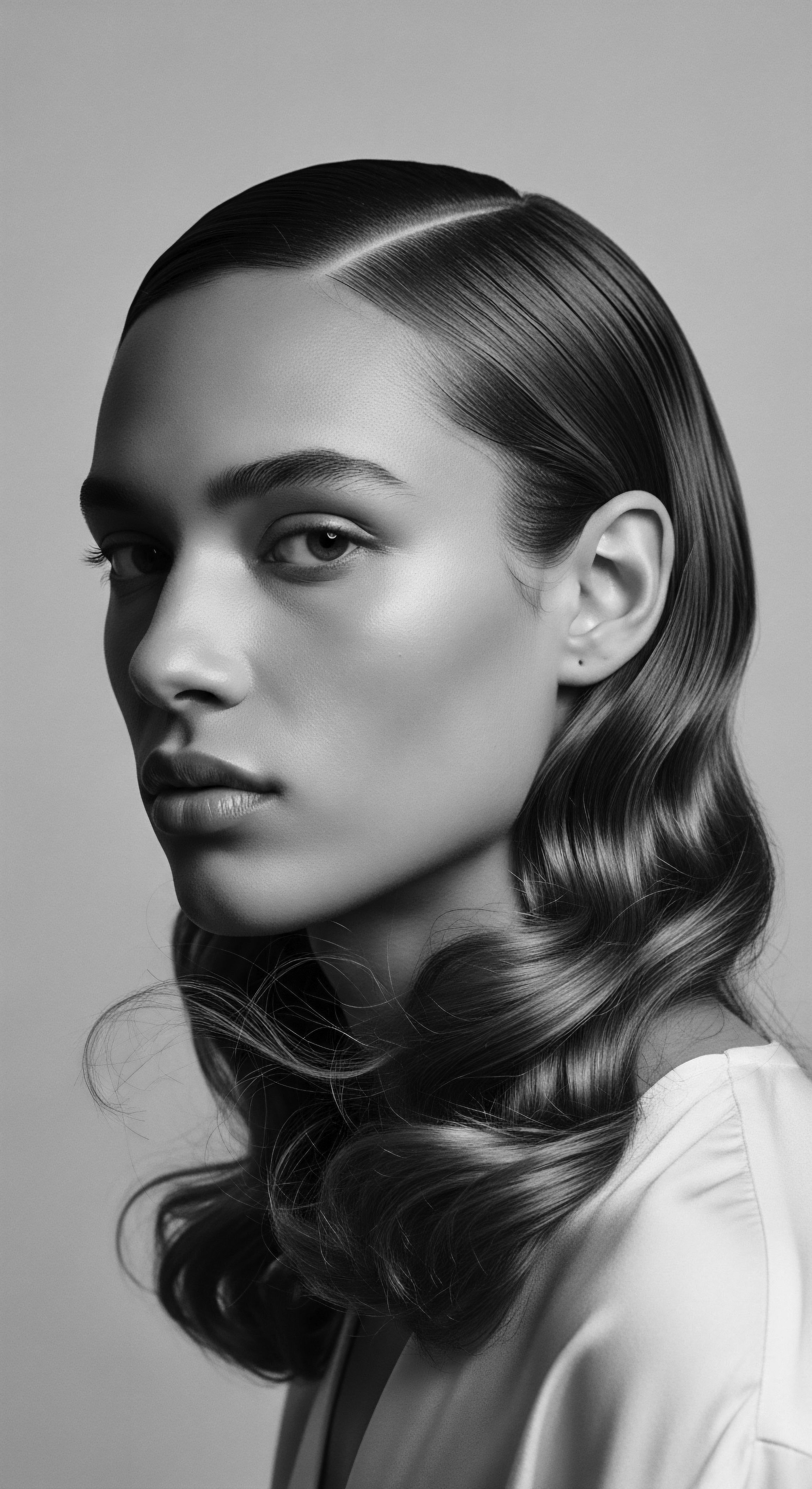
Protective Styling Ancestries
The concept of “protective styling,” so widely discussed in modern textured hair communities, finds its authentic origins in the ingenious practices of ancient civilizations. These styles were designed to safeguard hair from environmental elements, reduce manipulation, and promote length retention. Braids, twists, and various forms of updos were not only aesthetically pleasing but profoundly functional. In ancient Egypt, intricate braiding patterns were common, with styles like the “Nubian twist” and “Egyptian plait” reflecting both fashion and social standing.
The practice of braiding, a ceremonial rite for many Black women across generations, is documented in ancient Egyptian drawings dating back to 2050 B.C. This ancient heritage of protective styling speaks to a timeless understanding of textured hair’s delicate nature and the necessity of safeguarding its integrity.
- Braids ❉ Thousands of years old, serving as a protective method and a social symbol in various African communities.
- Coiled Updos ❉ Often secured with pins, nets, or even woven thread, preventing tangling and breakage.
- Wigs and Extensions ❉ Used in ancient Egypt not only for aesthetic purposes but also for protection from the sun and heat, and to manage hair length, often mimicking naturally dense styles.

Natural Styling and Definition Echoes
The pursuit of defined curls and coils, a hallmark of today’s natural hair movement, has deep roots in antiquity. Ancient communities understood how to coax and preserve the natural curl pattern of textured hair, often employing simple yet remarkably effective methods. While explicit “curl definition” products as we know them were nonexistent, the use of emollient oils, butters, and resins would have served a similar purpose, providing moisture and light hold to enhance the hair’s natural form.
For example, ancient Greeks, despite not using heated curling irons like the Romans, would wrap damp hair around smooth sticks to achieve corkscrew curls, a technique that would have been particularly effective on naturally textured hair. They used lotions, balms, and beeswax to soften hair and aid in styling.
This subtle, nurturing approach allowed the hair’s innate beauty to shine. The “definition” sought was not about altering the hair’s inherent structure, but rather accentuating its natural grace. It was a celebration of the hair as it grew, a deep respect for its unique twists and turns, reflecting a care ethic grounded in acceptance and heritage .

Wigs, Hair Extensions, and Their Ancestral Significance
The history of wigs and hair extensions reaches back thousands of years, holding profound cultural and practical significance in ancient societies, especially concerning textured hair. In ancient Egypt, wigs were not merely fashion accessories; they provided protection from the harsh sun, symbolized social status, and offered a means to maintain intricate hairstyles without constant manipulation of one’s natural hair. Wigs made of human hair, animal fibers, or plant materials were meticulously crafted, often in styles that mimicked or enhanced natural curl patterns. For example, the popular Nubian wig style aimed to replicate the short, curly hair characteristic of Nubian peoples.
These complex pieces could take hundreds of hours to create, involving processes like knotting hair onto a mesh base using beeswax and resin. The use of black hair sourced from the Indian subcontinent for Roman wigs indicates a long-standing practice of incorporating diverse hair types to achieve desired aesthetics.
The practice extended beyond Egypt. In ancient Rome, wigs were also common, with preferences for blonde hair from Germanic women and dark hair from India. This demonstrates a broader ancient practice of supplementing natural hair for volume, length, or to follow prevailing styles. Such historical instances underscore that the manipulation of hair through extensions is an ancient art, deeply rooted in the desire for versatility and expression, connecting modern practices to a powerful heritage .

Thermal Reconditioning and Ancient Cautions
While modern thermal reconditioning involves chemical treatments and high-heat tools to permanently alter hair texture, ancient communities certainly applied heat to hair, albeit with more rudimentary methods. The Romans, for instance, used a heated tapered metal rod called a calamistrum to curl hair. This rod would be heated in hot ash or open flame, and careless application could scorch or break the hair.
This suggests an awareness of the potential for heat damage, even if the underlying science was not fully understood. In Greece, historians note the Assyrians as possible inventors of the curly ‘do, using a hair iron to achieve sorted curls.
Such practices remind us that the desire to reshape hair is enduring. However, ancient methods, without the precision and safety of modern technology, would have required significant skill and caution. The lessons from these early thermal manipulations speak to the inherent fragility of hair when exposed to intense heat and the timeless challenge of balancing desired aesthetics with hair integrity.

The Complete Ancestral Hair Toolkit
The tools of ancient hair care were often simple, fashioned from readily available natural materials, yet they were exceptionally effective. These implements were extensions of skilled hands, aiding in cleansing, detangling, styling, and adorning. Their very construction speaks to the ingenuity of communities relying on their immediate environment.
Combs ❉ Frequently crafted from wood, bone, or ivory, combs were universal across many ancient civilizations. They served to detangle, part, and arrange hair. The design of these combs would have varied to suit different hair types, though wide-toothed versions would have been essential for managing textured hair with minimal breakage.
Hairpins and Adornments ❉ Made from wood, bone, metal, or even thorns, pins secured elaborate styles. Adornments, from simple bands of cloth to ornate jewels, not only held hair in place but also proclaimed social status, wealth, or tribal affiliation. For instance, the elite in ancient Egypt adorned their braids with precious jewels, beads, and gold accessories.
Fibers and Threads ❉ For intricate styles like elaborate braids and sewn-in arrangements, needles and various fibers, such as wool, were used. Janet Stephens’ research on ancient Roman hairstyles, for example, demonstrated how complex updos were sewn into place with large needles ( acus ) and wool, rather than relying solely on pins or combs. This technique would have been particularly beneficial for securing dense, textured hair.
Natural Applicators ❉ Hands were the primary tools for applying oils, clays, and herbal mixtures. Bowls or gourds held concoctions, while natural sponges or soft cloths might have aided in cleansing or conditioning.
These ancient tools, though humble, were central to the heritage of hair care, embodying a practical knowledge that allowed communities to honor and maintain their hair’s natural beauty.

Relay
The whispers of ancient wisdom continue to echo through the modern world, especially within the realm of textured hair care. These ancestral practices, far from being relics of a distant past, represent a profound, holistic approach to hair health, deeply interwoven with collective well-being and a living heritage . Our inquiry into how ancient communities cared for their hair’s texture reveals a meticulous attention to regimen, nighttime protection, and the potent gifts of the Earth, all grounded in a philosophy that viewed hair as an integral part of the self and community.

Ancestral Wisdom and Modern Hair Regimens
The idea of a “regimen”—a consistent, structured approach to hair care—is not a modern invention. Ancient communities, particularly those with a prevalence of textured hair, developed sophisticated routines tailored to their hair’s unique needs and their environmental conditions. These regimens were often passed down through oral tradition, from elder to child, forming a rich tapestry of inherited knowledge.
For instance, in ancient Africa, hair care was a social and communal activity, with practices centered on growth, strength, and curl enhancement. Early African “shampoos” were often multi-purpose soap bars, complemented by leave-on products crafted from oils, butters, milks, powders, and resins.
Consider the consistent application of natural oils in ancient Egypt, where castor oil was a staple for conditioning and strengthening hair, often mixed with honey and herbs to create masks promoting growth and shine. This mirrors today’s emphasis on deep conditioning and moisturizing for textured hair. The meticulousness of these routines, from cleansing with natural clays to nourishing with botanical extracts, demonstrates a practical understanding that consistency builds health. We witness a direct lineage from these ancient practices to contemporary regimens that prioritize moisture, protection, and gentle handling for coils and curls.
This enduring commitment to structured care, transcending centuries and continents, speaks to the inherent needs of textured hair—needs that remain consistent regardless of technological advancements. The wisdom gleaned from ancient communities suggests that hair care is not merely reactive; it is a proactive, often ritualistic, act of preservation and celebration.

The Nighttime Sanctuary and Bonnet Wisdom
The preservation of textured hairstyles and the protection of strands during sleep were not new concerns to ancient peoples. While the “satin bonnet” as we know it is a relatively modern innovation, the underlying principle of protecting hair at night has a long and compelling heritage . Ancient communities intuitively understood that friction and exposure during sleep could lead to tangling, breakage, and the undoing of painstakingly styled hair. While direct archaeological evidence of ancient bonnets is sparse, historical accounts and cultural practices suggest various forms of head coverings were employed for protection and modesty.
For example, in ancient Greece, women often secured their hair with nets or bands, which could have offered some nighttime protection. In ancient Rome, women often used hairpins, nets, and scarves to control their long hair.
Across various African cultures, headwraps and coverings held significant cultural and practical meaning. They were donned for spiritual purposes, as markers of status, and also for protecting elaborate hairstyles. This practice, often linked to the preservation of hair and moisture, mirrors the modern use of bonnets and wraps. The continuity of this practice—from ancient coverings to modern satin bonnets—highlights a shared ancestral knowledge about safeguarding textured hair, ensuring its health and the longevity of its intricate styles, protecting the crown even in slumber.
| Ancient Practice Wrapping hair with cloth, often for cultural or practical reasons. |
| Modern Parallel Wearing silk or satin bonnets, scarves, or pillowcases for friction reduction. |
| Ancient Practice Securing elaborate styles with nets or pins to prevent unraveling. |
| Modern Parallel Pineapple method or loose braiding to maintain curl patterns overnight. |
| Ancient Practice Using natural oils/butters before covering hair. |
| Modern Parallel Applying leave-in conditioners or oils to hair before sleep. |
| Ancient Practice The enduring wisdom of protecting hair during rest speaks to a timeless understanding of textured hair's unique needs. |

What Can Ancient Ingredients Tell Us About Textured Hair Needs?
Ancient communities were skilled apothecaries of their natural environments, extracting powerful remedies and nourishing compounds for hair care from local flora and fauna. Their “ingredient deep dives” were not conducted in laboratories, but through generations of empirical trial and shared wisdom. The choices of ingredients were inherently tied to what was locally available and proven effective for maintaining hair health, especially for textured strands which crave moisture and specific nutrients.
Plant-Based Oils ❉ Olive oil was a beauty staple in ancient Greece and Rome, used to keep hair soft and lustrous. Sesame oil was also used in Mesopotamia for hair health. In ancient Egypt, castor oil was utilized for conditioning and strengthening.
These oils, rich in fatty acids, provided emollients vital for coating and conditioning textured hair, reducing dryness and breakage. Coconut oil, prominent in ancient Indian Ayurvedic practices, nourished the scalp and strengthened hair.
Herbal Extracts ❉ Herbs played a central role. In India, ingredients like amla (Indian gooseberry) and bhringraj were used for scalp nourishment and preventing premature graying. Fenugreek, used in ancient Egypt, was valued for strengthening hair and reducing dandruff, likely due to its protein content. The use of various plant extracts for cleansing, conditioning, and even coloring (like henna) was widespread, demonstrating a profound ethnobotanical knowledge.
Natural Binders/Sealers ❉ Beeswax, alongside conifer resin, was used in ancient Egypt to bind and reinforce wigs, highlighting its adhesive and protective properties. These substances would have been beneficial for sealing moisture into textured strands and providing hold for styles, much like modern styling creams.
The continuous thread of these natural ingredients through time illustrates a recognition of their efficacy. Modern science now validates many of these ancestral choices, explaining the mechanisms behind their benefits for textured hair. This deep respect for nature’s offerings is a cornerstone of our textured hair heritage .

Addressing Hair Problems with Ancestral Remedies
Hair health issues—dryness, breakage, hair loss, scalp conditions—are not new phenomena. Ancient communities faced these challenges too, and they developed resourceful solutions rooted in their observations and available natural resources. Their methods, though lacking modern scientific labels, represented an empirical approach to “problem solving” for textured hair.
- Dryness ❉ Consistent oiling with substances like castor oil, olive oil, and various plant butters was the primary defense against dryness, a common concern for textured hair due to its structure.
- Hair Loss ❉ Ancient Egyptians, for example, had remedies for hair loss, with one papyrus from 1150 BC suggesting the use of fats from various animals. Lotus leaves steeped in fat or oil were also prescribed.
- Scalp Health ❉ Herbs with purported anti-inflammatory or antimicrobial properties would have been used to address scalp irritation or conditions. For instance, fenugreek, used in ancient Egypt, was also linked to reducing dandruff and promoting scalp health.
- Strengthening ❉ Ingredients like amla and bhringraj in Ayurvedic practices were employed to strengthen hair and prevent premature graying, indicating an understanding of hair’s resilience.
These historical solutions, often drawn from deep ethnobotanical knowledge, represent a practical understanding of hair and scalp needs. They reflect a proactive stance against common hair issues, relying on the gifts of the natural world and communal wisdom to maintain hair vitality.
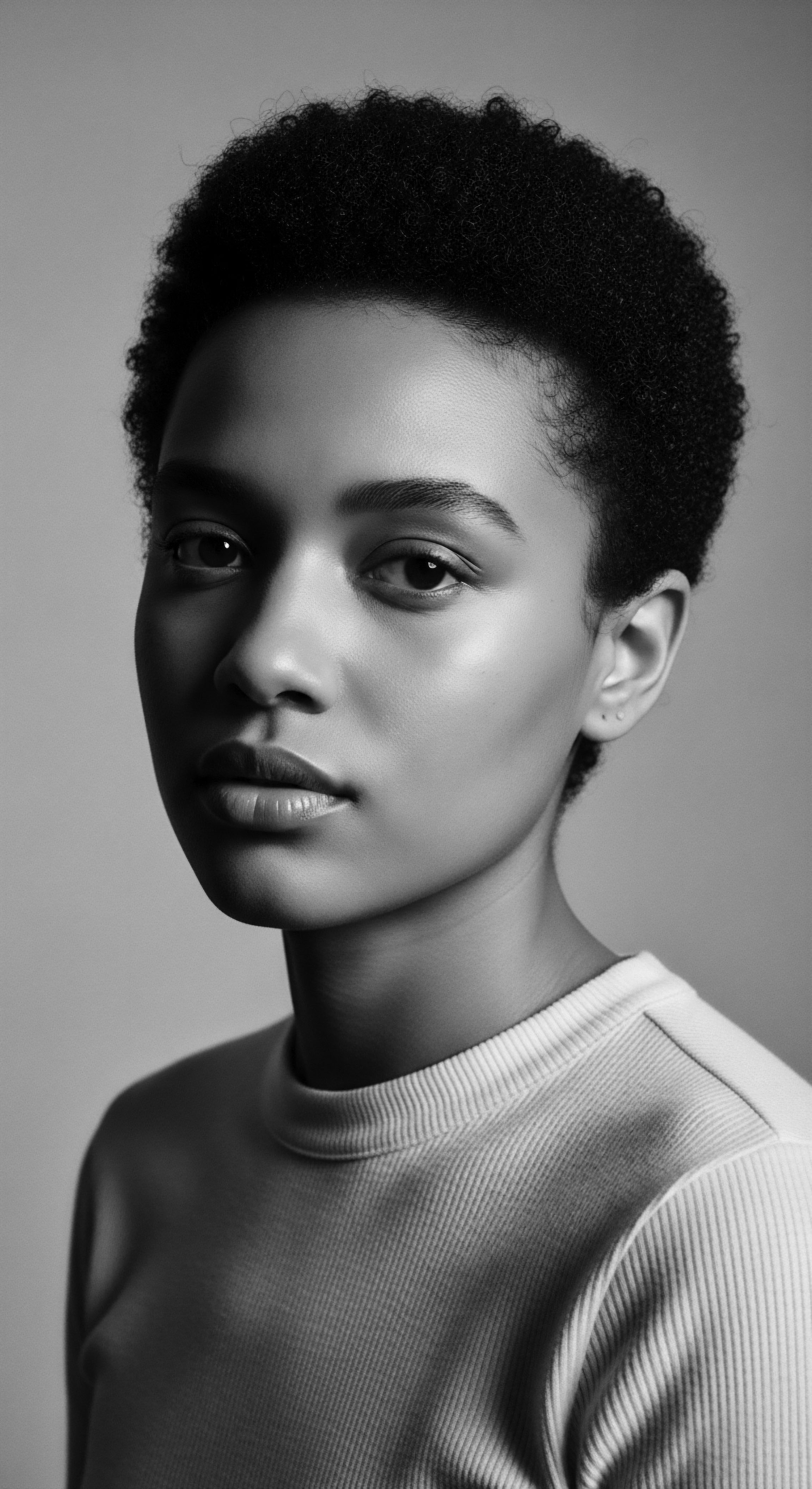
Holistic Influences on Hair Wellness
In many ancient cultures, hair was viewed holistically—not as an isolated aesthetic feature, but as a direct reflection of inner health, spiritual balance, and communal harmony. This contrasts sharply with a purely cosmetic perspective, emphasizing a deep connection between the physical self and broader well-being. Ancestral wellness philosophies often linked diet, stress, and spiritual practices to hair vitality. For example, the ancient Indian system of Ayurveda considers hair health an extension of overall bodily balance, emphasizing specific ingredients and practices that nourish from within.
The communal aspect of hair care in many African societies further underscores this holistic view. Grooming sessions were often social events, fostering bonds and transmitting cultural knowledge. The care of hair became an act of community, a shared ritual that reinforced social structures and identity. This holistic perspective, where hair care intertwined with lifestyle, spirituality, and social fabric, offers a profound lens through which to appreciate the heritage of textured hair—a reminder that beauty is not superficial but deeply rooted in well-being and interconnectedness.

Relay
The echoes of ancient care rituals reverberate powerfully through the modern textured hair experience, inviting a deeper reflection on heritage , science, and self. To truly grasp how ancient communities tended their hair’s texture is to acknowledge a continuous conversation between past wisdom and present understanding. This deep dive into historical practices provides not just anecdotes, but foundational principles that continue to guide contemporary care, reminding us that the ‘Soul of a Strand’ is a timeless entity, ever unfolding.
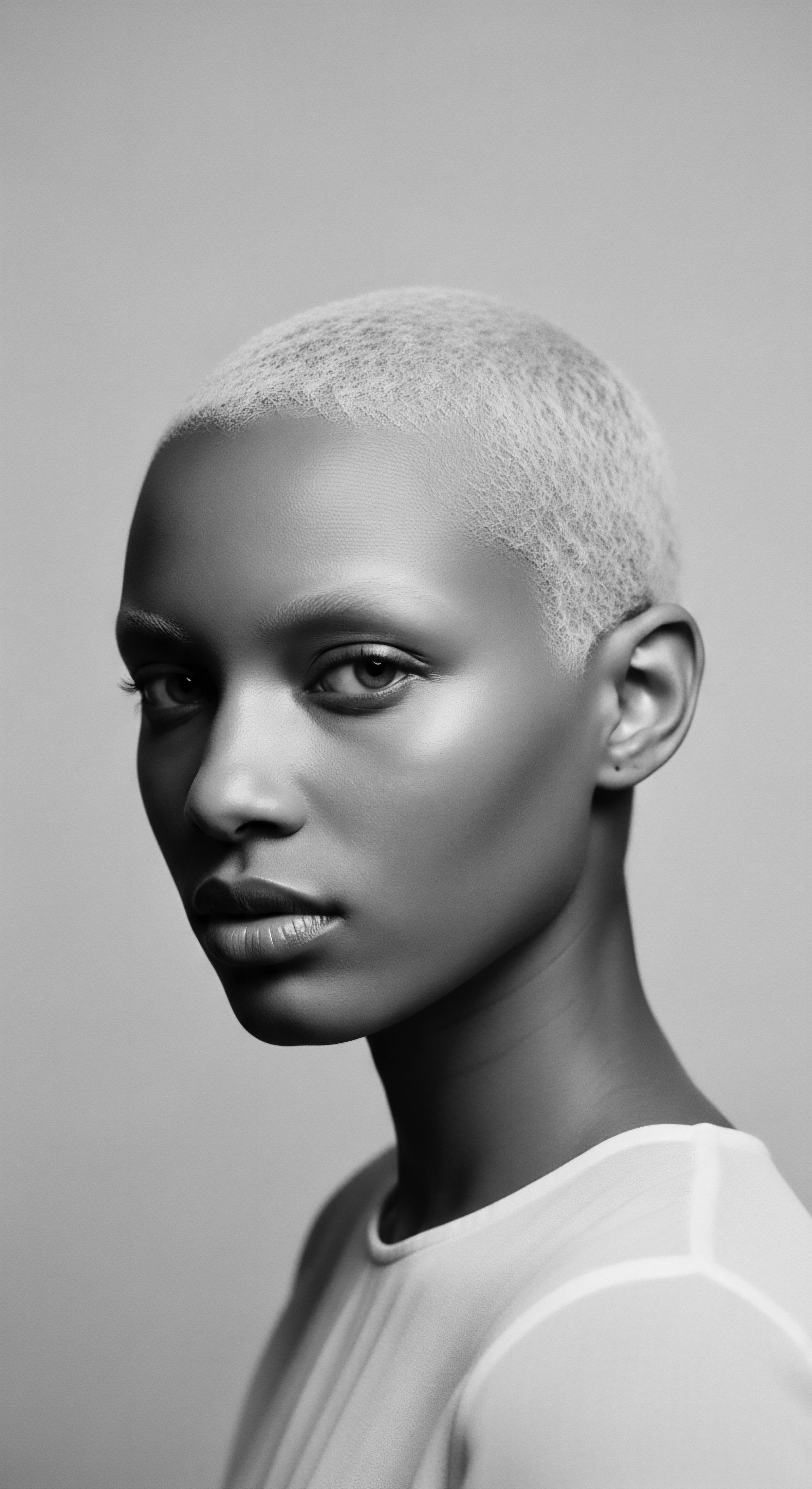
Unveiling the Ancient Chemistry of Coils
Modern hair science, with its sophisticated understanding of protein bonds, porosity, and the hair cuticle, offers a fascinating validation of ancient practices. The elliptical cross-section of textured hair, leading to its characteristic coils, also means that the outer cuticle layers are often more exposed and prone to lifting, which can result in moisture loss. Ancient communities, without the electron microscope, intuitively combatted this.
Their liberal use of natural oils—like castor, olive, and coconut—effectively created occlusive barriers, mimicking the function of modern sealants. These oils, rich in saturated and monounsaturated fatty acids, would have helped to smooth down the cuticle, reducing evaporation and improving the hair’s suppleness, a biological imperative for textured strands.
The practice of “oil pulling” on hair or massaging the scalp with warmed oils, common in many ancient traditions including Ayurvedic practices, stimulated blood circulation to the follicles, delivering essential nutrients. While they may not have articulated the role of the dermal papilla or specific growth factors, their actions directly supported healthy hair production, showcasing a practical, empirical science passed down through generations. This underscores how traditional knowledge, often dismissed as folklore, frequently holds profound scientific basis, validated by contemporary research.

Does Ancient Understanding Inform Contemporary Care?
The answer resonates clearly ❉ ancient understanding absolutely informs contemporary textured hair care. Consider the widespread practice of protective styling, a cornerstone of many modern regimens. Cornrows, box braids, and twists, which shield delicate ends and minimize daily manipulation, directly trace their origins to elaborate braiding traditions practiced across Africa for millennia. The symbolism embedded in these styles—from communicating marital status to social hierarchy—has morphed, yet the fundamental benefit of protection for textured hair remains unchanged.
The sustained popularity of natural ingredients like shea butter, coconut oil, and various herbal infusions within the contemporary textured hair product market also reflects this deep ancestral connection. These are not new discoveries; they are a re-affirmation of components that nourished and protected hair for countless generations. The knowledge that specific botanicals possess properties beneficial for hair growth, conditioning, or scalp health was meticulously accumulated through centuries of traditional medicine and ethnobotanical practices. For example, the application of henna for coloring and conditioning, documented in ancient Egyptian use, continues to be valued today for its ability to strengthen and add luster to textured hair.
This enduring relevance is perhaps best observed in the cultural resurgence of natural hair. The choice to wear one’s hair in its inherent texture, often rejecting chemically altered forms, is a powerful act of reclaiming heritage . It is a conscious decision to reconnect with ancestral beauty standards and practices that honored the natural state of coils and curls, rather than seeking to suppress them. This movement, driven by a desire for authenticity and wellness, is a direct relay of ancient wisdom into the present moment.
The resurgence of natural hair care echoes ancient principles, reaffirming a timeless wisdom concerning textured strands.
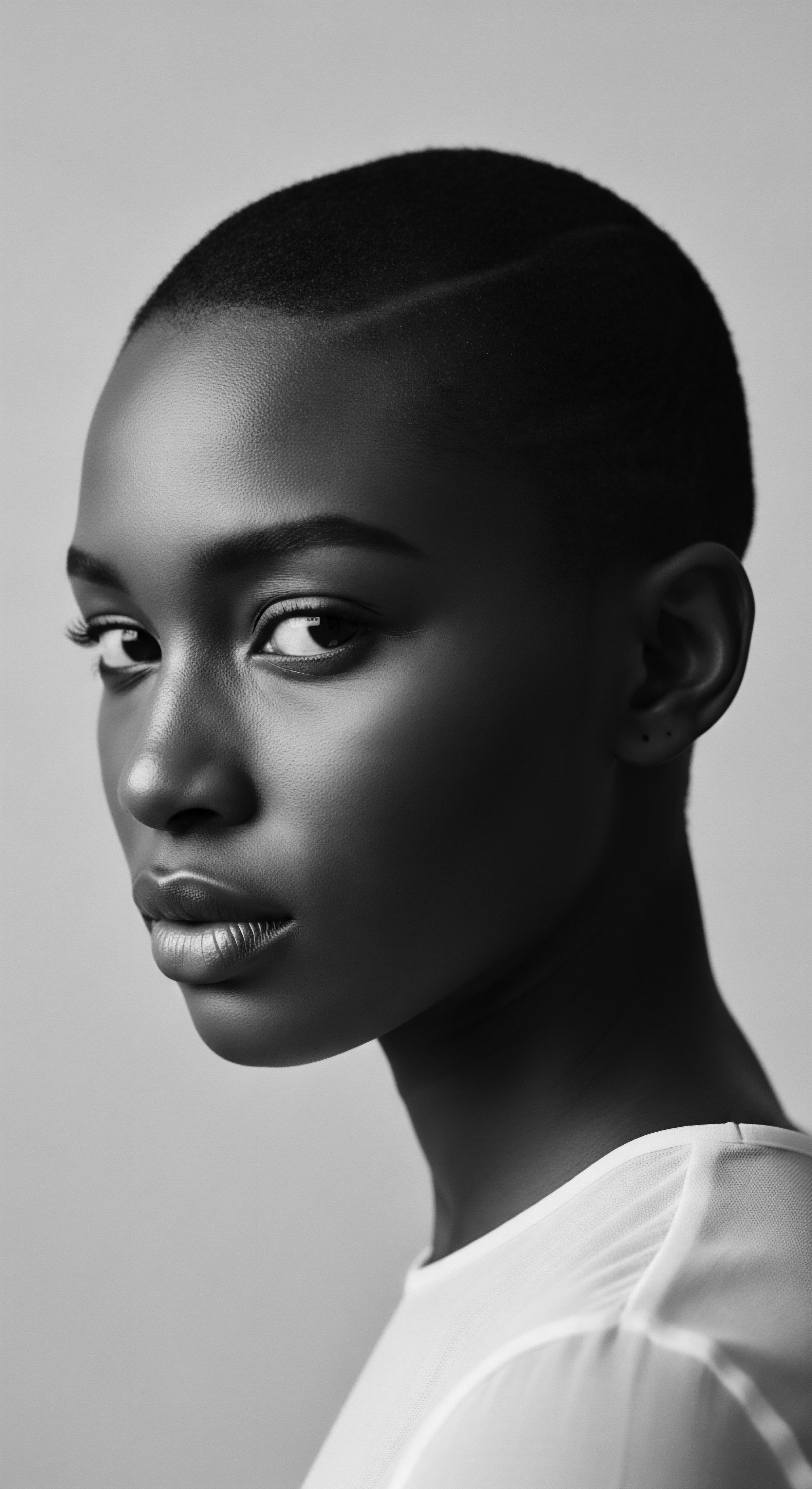
Social Fabric and Hairstyling in Ancient Times
Hair in ancient societies was far more than an aesthetic adornment; it was an eloquent language. Hairstyles communicated a person’s identity, social standing, religious beliefs, age, and even marital status. This social encoding of hair was particularly pronounced in communities with diverse textured hair types, where the malleability of curls lent itself to intricate, symbolic styles. For example, in ancient Africa, a person’s hairstyle could tell a story about their family, tribe, or even whether they were in mourning.
This deep social integration meant that hair care was often a communal activity. Women would gather, braiding and grooming each other’s hair, transforming a routine task into a vital social bonding experience. These shared moments were not just about physical care; they were spaces for storytelling, for the transmission of cultural norms, and for reinforcing communal ties. The patience and precision required for intricate textured hairstyles made these gatherings extended periods of connection and knowledge transfer.
The very act of touching and tending to another’s hair built intimacy and trust, weaving individuals into the larger social fabric. This aspect of hair care, as a conduit for social cohesion and the preservation of heritage , offers a powerful counterpoint to often individualized modern beauty practices.

How Did Climate Influence Ancient Textured Hair Care?
Climate played a non-trivial role in shaping ancient hair care practices, particularly for textured hair. In hot, arid regions, the primary challenge for textured hair is maintaining moisture. As noted, the spiraled structure of curly hair makes it more difficult for natural oils to travel down the shaft, leading to dryness.
Early humans in equatorial Africa, for whom afro-textured hair is believed to have been an adaptation, benefited from its insulating properties, which protected the scalp from solar radiation and helped regulate body temperature. This natural adaptation was then supported by external care.
Communities in these climates developed practices focused on deep moisturization and sealing. They utilized readily available emollients like plant oils and animal fats to coat the hair, reducing water loss. This is evident in the Egyptian use of castor oil and other fatty compounds. In contrast, in more humid climates, the challenge might have shifted towards managing frizz or maintaining style, perhaps leading to more emphasis on protective styles that minimize exposure to moisture in the air.
The ingenuity of ancient communities lay in their adaptive response to their environment, understanding that hair care was an ongoing dialogue with their surroundings, ensuring hair resilience regardless of external conditions. This environmental attunement is a quiet yet persistent element of our textured hair heritage .
One striking historical example of this interplay between climate, texture, and care comes from the archaeological discoveries related to ancient Nubian hair care. The Nubian people , residing in regions characterized by intense sun and dry heat, developed sophisticated methods to protect and style their naturally tightly coiled hair. Analysis of hair samples from Nubian mummies has revealed traces of specific oil and resin mixtures, often containing ingredients like acacia gum and various plant extracts. These preparations were applied not only to nourish the hair but also to help create and maintain intricate braided and twisted styles, such as the “Nubian twist.” This sustained use of protective applications and durable styling methods was a direct response to the environmental demands, demonstrating a deep practical knowledge of how to preserve textured hair health in challenging climates.
(Lasisi et al. 2023)
This case study illustrates how ancestral ingenuity in hair care was often driven by ecological necessity. The elaborate protective styles and the purposeful application of specific botanical compounds were not random acts but rather highly effective, generationally refined strategies to safeguard the hair’s integrity against environmental stressors. This profound connection between environmental adaptation and the refinement of hair care traditions speaks volumes about the holistic wisdom cultivated by ancient communities, a wisdom deeply woven into the textured hair heritage .
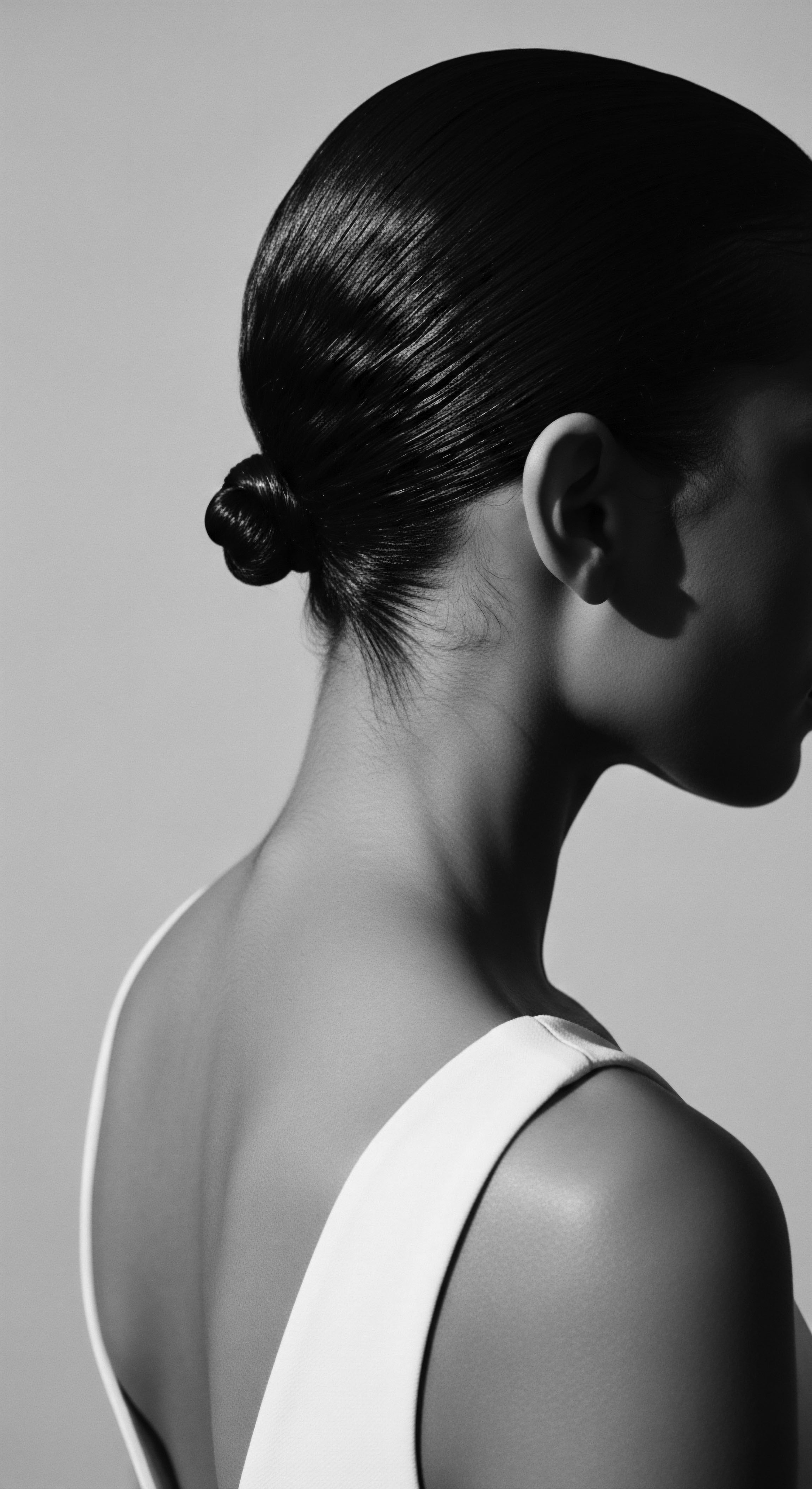
Reflection
As we trace the intricate lines of textured hair heritage , from the foundational biology of the strand to the intricate rituals of ancient care, a profound truth emerges. The story of how ancient communities cared for their hair’s texture is a vibrant, living archive—a testament to human ingenuity, cultural resilience, and an enduring connection to self. It is a story told not just in historical texts or archaeological finds, but in the very curl patterns that grace heads today, in the communal wash day rituals passed down through families, and in the conscious choices made to honor one’s inherent beauty.
This journey reveals that hair care, for our ancestors, was a holistic practice—a blend of practical science, communal bonding, and spiritual reverence. They understood the nuances of their hair, adapting to climate, leveraging nature’s bounty, and transforming daily routines into sacred moments. The techniques, ingredients, and philosophies they cultivated are not lost to time; they are the very ‘Soul of a Strand’, a whispering wisdom that guides us still. By understanding this deep past, we do not simply learn history; we recognize ourselves, affirming the enduring legacy of textured hair and its profound place in shaping identity across generations.
References
- Chimbiri, K. N. (2021). The Story of Afro Hair. Scholastic.
- Gavazzoni Dias, M. F. R. (2015). Hair cosmetics ❉ an overview. International Journal of Trichology, 7(2), 2–15.
- Gharu, J. & Trivedi, S. (2016). Ancient hairs ❉ Need for morphological analysis of prehistoric and extant Mammals. Vertebrate Zoology, 66(2), 221-224.
- Lasisi, S. Havlickova, Z. & Havenith, G. (2023). Human scalp hair as a thermoregulatory adaptation. Proceedings of the National Academy of Sciences, 120(24), e2213623120.
- Sadeh, N. S. (2022). The Secrets of Classical Beauty ❉ Exploring Greek Aesthetics in Art and Thought. Oriental Publishing.
- Sharaibi, O. J. Oluwa, O. K. Omolokun, K. T. Ogbe, A. A. & Adebayo, O. A. (2024). Cosmetic Ethnobotany Used by Tribal Women in Epe Communities of Lagos State, Nigeria. Juniper Publishers .
- Stephens, J. (2008). Ancient Roman Hairdressing ❉ On (Hair) Pins and Needles. Journal of Roman Archaeology, 21, 110-120.
- Tharps, L. & Byrd, A. D. (2001). Hair Story ❉ Untangling the Roots of Black Hair in America. St. Martin’s Publishing.
- Tassie, G. J. (2009). The Social and Ritual Contextualisation of Ancient Egyptian Hair and Hairstyles from the Protodynastic to the End of the Old Kingdom. UCL Discovery.
